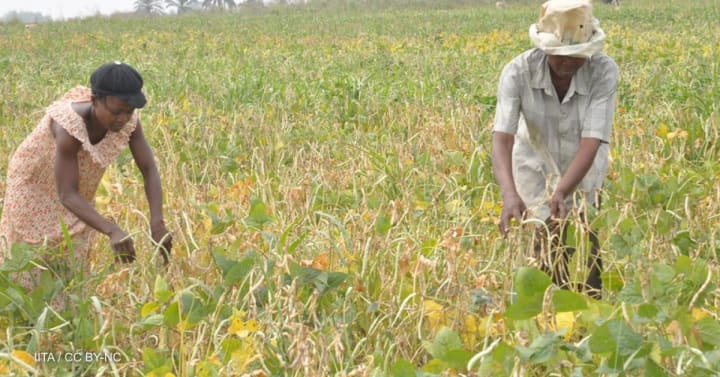28 January 2022. Opinion: Genetically modified crops need greater farmer inclusion
The recent U.N. Food System Summit brought renewed attention to the promise of genetically modified crops to address poverty and food insecurity in sub-Saharan Africa. The scientific committee to the summit reported that “a lot can be achieved by building research capacity and reducing institutional barriers” for GM crops and other agricultural technologies. Others went further, advocating for a “rapid adoption” of GM crops in Africa to address hunger, because they have the potential to “achieve the good [of modern agricultural systems] without achieving much of the bad.”
But a sober look at past performance shows that GM crops in sub-Saharan Africa haven’t yet achieved “the good.” GM crops have produced gains for many commercial and wealthy farmers. But for the dominant class of farmers on the continent — smallholders operating fewer than four hectares — gains have been elusive, and when achieved, have not been sustained.
But a sober look at past performance shows that GM crops in sub-Saharan Africa haven’t yet achieved “the good.” GM crops have produced gains for many commercial and wealthy farmers. But for the dominant class of farmers on the continent — smallholders operating fewer than four hectares — gains have been elusive, and when achieved, have not been sustained.
- In 1999, an insect-resistant form of cotton, Bt cotton, was introduced to smallholder farmers in the Makhathini Flats in South Africa. Adopters of Bt cotton reported some limited reductions in pesticide use and modest yield increases.
- Breeding issues have been a problem in the past, most notably in Burkina Faso — where at its peak in 2014 almost 144,000 households grew Bt cotton. Burkina Faso’s Bt cotton variety had lower cotton lint quality than conventional cotton varieties.
- Water Efficient Maize for Africa, or WEMA, — a GM maize variety designed to perform well under drought conditions. WEMA requires a “package” of high levels of fertilizers and increased and precise weeding in order to perform well.
- Another example is disease-resistant matooke banana, a GM cooking banana currently under development to mitigate the impacts of banana bacterial wilt disease, which causes over $500 million in damages in East and Central Africa annually.
If GM crop promoters are serious about achieving the goals of improving food security and reducing poverty, the crops they produce must resonate with a diversity of smallholder farmers. The possibility of achieving this elusive “good” must begin with more attention to farming context and a greater commitment to including a diversity of farmers as full participants in all project phases.


No comments:
Post a Comment